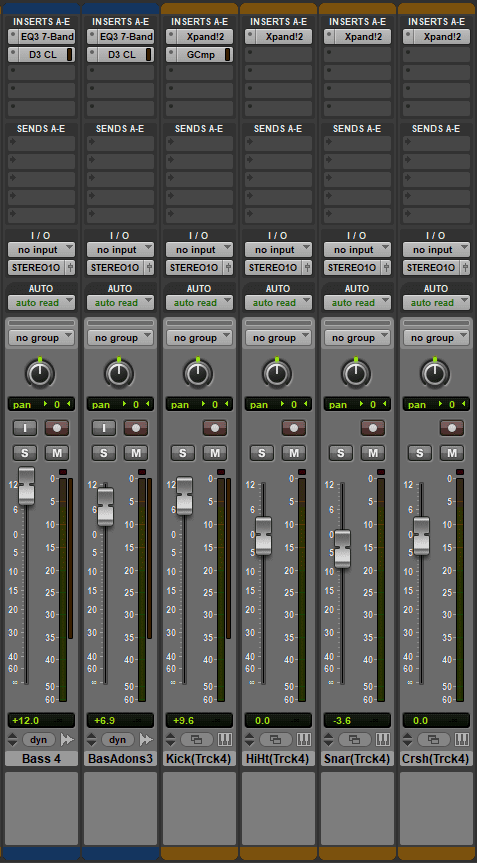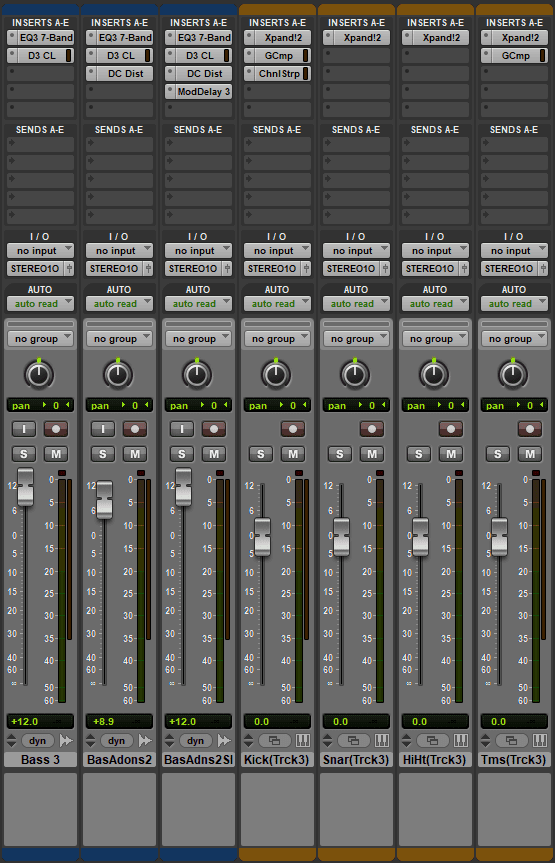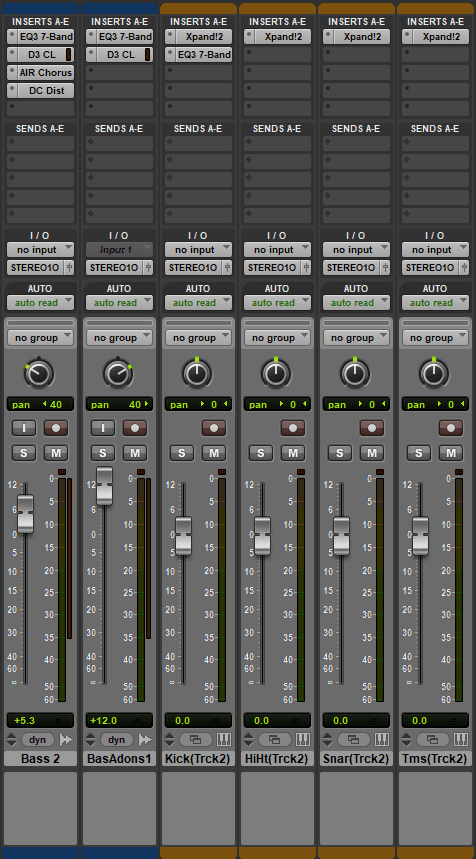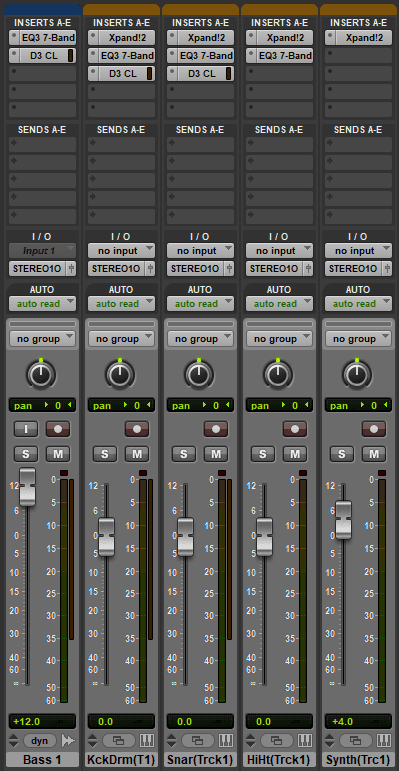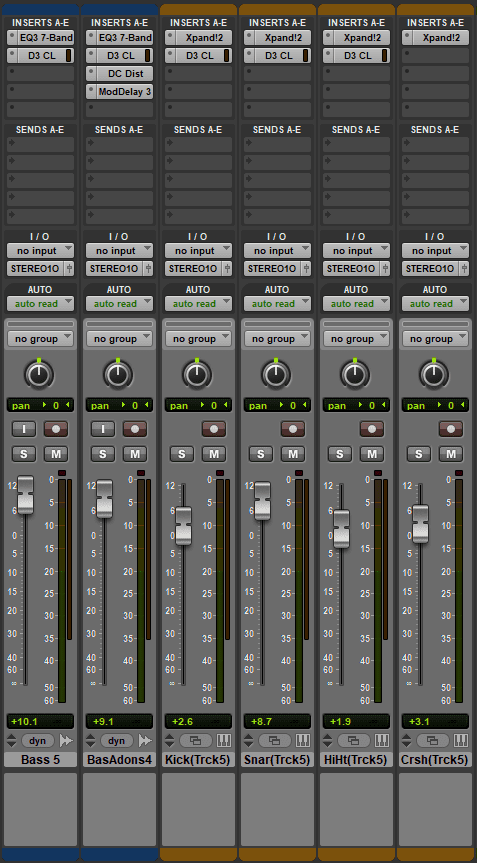
Song 5 was another muddy rock/metal song that I really wanted to mix and master well, in order to produce a song that was not only thorough in its use of plugins in the mastering stage, but also rough and loud, producing an in-your-face kind of feeling that was unique to this song. To do that, I raised the volume of every single track without the tracks peaking into the red, as I knew that I needed about “6dB of headroom right across the board” (according to soundonsound.com) so I could have some extra volume free for after I added the EQ, compression, distortion and delay. This way I was able to not only make the bass guitar parts a priority in this song according to my original aims, but it allowed the drums to become more than just keeping rhythm. Thanks to the volume boosting in the mixing process, the drums became an even more integral part of the song, being not only there to keep rhythm but also to provide the track with life, thanks to the variety of uses of the hi-hat, crash cymbal, kick and snare within the track.
The drum sections, except for the crash, all got compressors which suited the style of the song. The compressor on the kick trimmed off the louder and higher frequencies, producing a rougher, muddier kind of kick which was perfect for the song. The same could also be said for the snare, which also had the louder and higher frequencies reduced, giving it less of a defined hit but just enough so it could still be heard. The hi-hat benefited as it was a rather quiet sound in general, and the compressor placed on that allowed it to be made louder thanks to the reduction in the dynamic range, bringing more of a metallic sound to the drum kit (which was perfect as it added to the already metallic-sounding kick and snare). The mastering on the drums was absolutely what I wanted to make because of the fact it sounded so rough and imperfect. In my mind, it sounded like the drum kit tracks had been recorded in a garage one day, and the slightly metallic sounds produced from that suited the songs overall feel perfectly.
When it came to the bass parts, the usage of the EQ and compressors was almost identical to the mastering on Songs 3 and 4 simply because it made the lower frequencies much louder thanks to the reduction in the EQ as well as raising the mid-to-high frequencies, which then made a bigger change when the compressor was applied. The bass guitar that was not distorted needed to be kept relatively crisp so it could support the lead, and the constant hum of that bass helped the track to feel more muddy than usual, thanks to the constant invasion of sound at that frequency. This was an intended effect because, as described with the drums, I wanted the song to sound like a muddy and rough rock/metal song written in a garage or a shed, as well as have that in-your-face feeling which none of the other songs had.
Meanwhile, the lead bass also included a distortion plugin and a delay plugin to push that feeling even further. The distortion, similar to Songs 3 and 4, gave the lead bass guitar a fuzzy lead guitar-like sound, while the delay was there to add more noise to the track through its echo-like quality. I chose to use these plugins in this way because I felt that making a ‘wetter’ sound (where you could hear the effects of reverb/delay plugins clearly, as compared to a ‘dry’ sound, where there are no audible effects) would produce more noise, which would not only make the song sound muddier, but also mean that there would be more sounds to listen to, thus enhancing the in-your-face feeling I desired to create in the song.
The song, prior to the mixing/mastering stage, sounded like this:
The final song now sounds like this:

